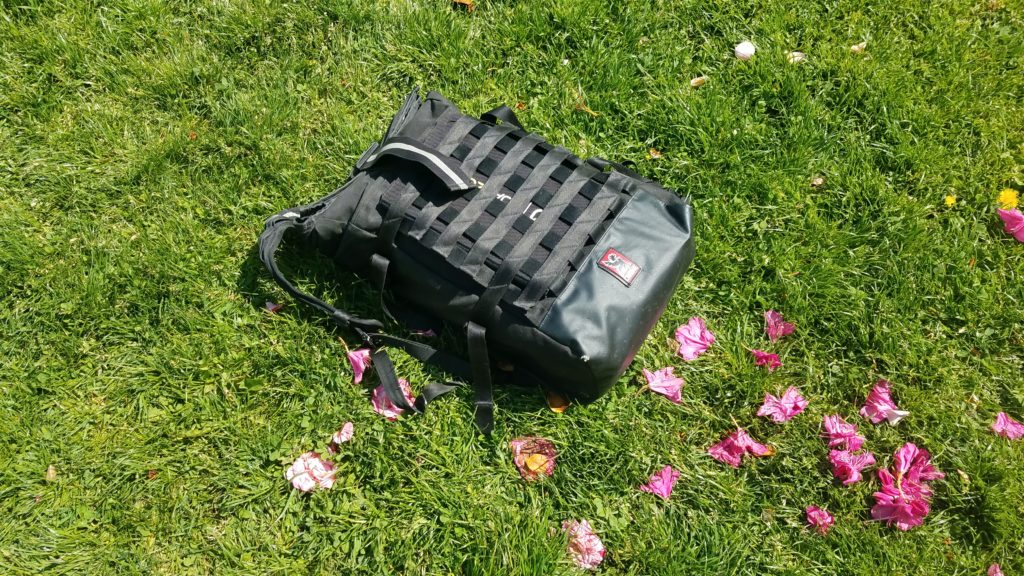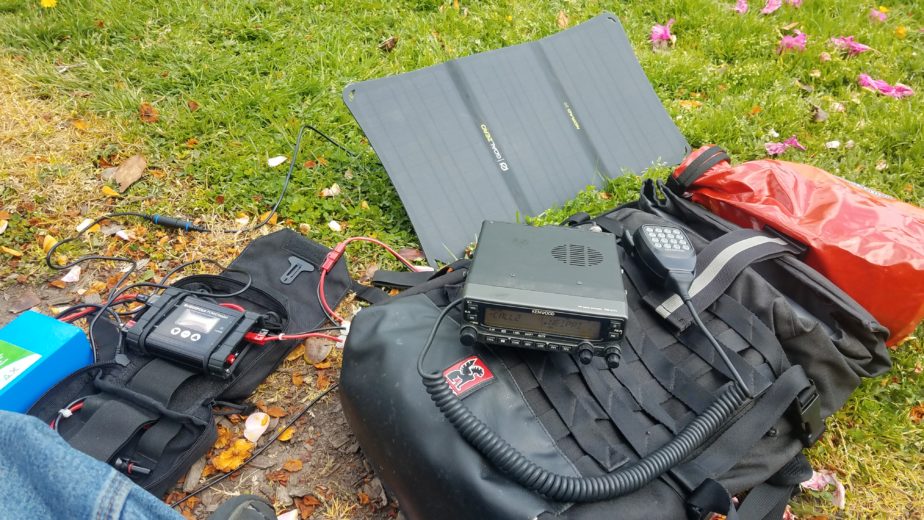After a bit of a posting hiatus I thought I’d post a bit about some impromptu radio operation from a park on a fairly sunny weekend day. My partner had a meeting with some folks in our pod in Ladd’s Addition, a Portland neighborhood with a central park so I decided to set up my portable radio station and do some UHF/VHF work locally to see who I could reach from said park. The station I brought is based on a Kenwood TM-V71A and fits in a single bag along with a battery and a 20W folding solar panel. This is essentially the same setup I’d use for emergency communications with a larger antenna or solar panel.


I ended up putting my modified Ed Fong DBJ-1 roll-up j-pole antenna in a large rose bush and hooking it up to my TM-V71A, and hooking the battery, solar panel, and charge controller up. I started operating at medium power (10W) and was able to reach Roger, W7RC, in Battleground, WA without issue on the 2M calling frequency (146.520MHz). This is pretty typical as he runs a beam antenna with the capability of transmitting at 1.5KW and is something of a local fixture. He reported me coming in with full quieting at 10W, and when I dropped to 5W (low power) he heard me with a little static. I also made some additional contacts including one in the Council Crest area: Ed, WB2QHS. He was out for a walk with an HT and we were able to talk with perfect clarity and then some static as he moved around with me running 5 and 10W. His elevated position helped facilitate communications. In about 2.5 hours I used somewhere around 1.3Ah of battery power, but was able to recharge the battery completely from the solar panel by the time I left. Not bad! The radio draws about 0.6A idling, and the solar panel charged at a maximum rate of ~1.1A in more intense sunlight. When I was transmitting at 10W the radio drew ~5A and at 5W ~3.5A. All these power figures are as measured by my Buddipole Power Mini. The current model features a USB port where the one I’m running doesn’t. I should also mention I topped up my phone charge from the battery as well.
If the solar panel provides more power than is required for the radio’s operation and the battery is charged the radio doesn’t draw from the battery. In the event the solar panel isn’t providing enough power to cover the radio’s power needs it dips into the battery, and when the radio consumes less power than the solar panel provides the battery is charged with spare current.

As shown above the whole station packs into my backpack without issue. Were I not on call for my job and carrying a hotspot and laptop there would be some additional room in the bag.

